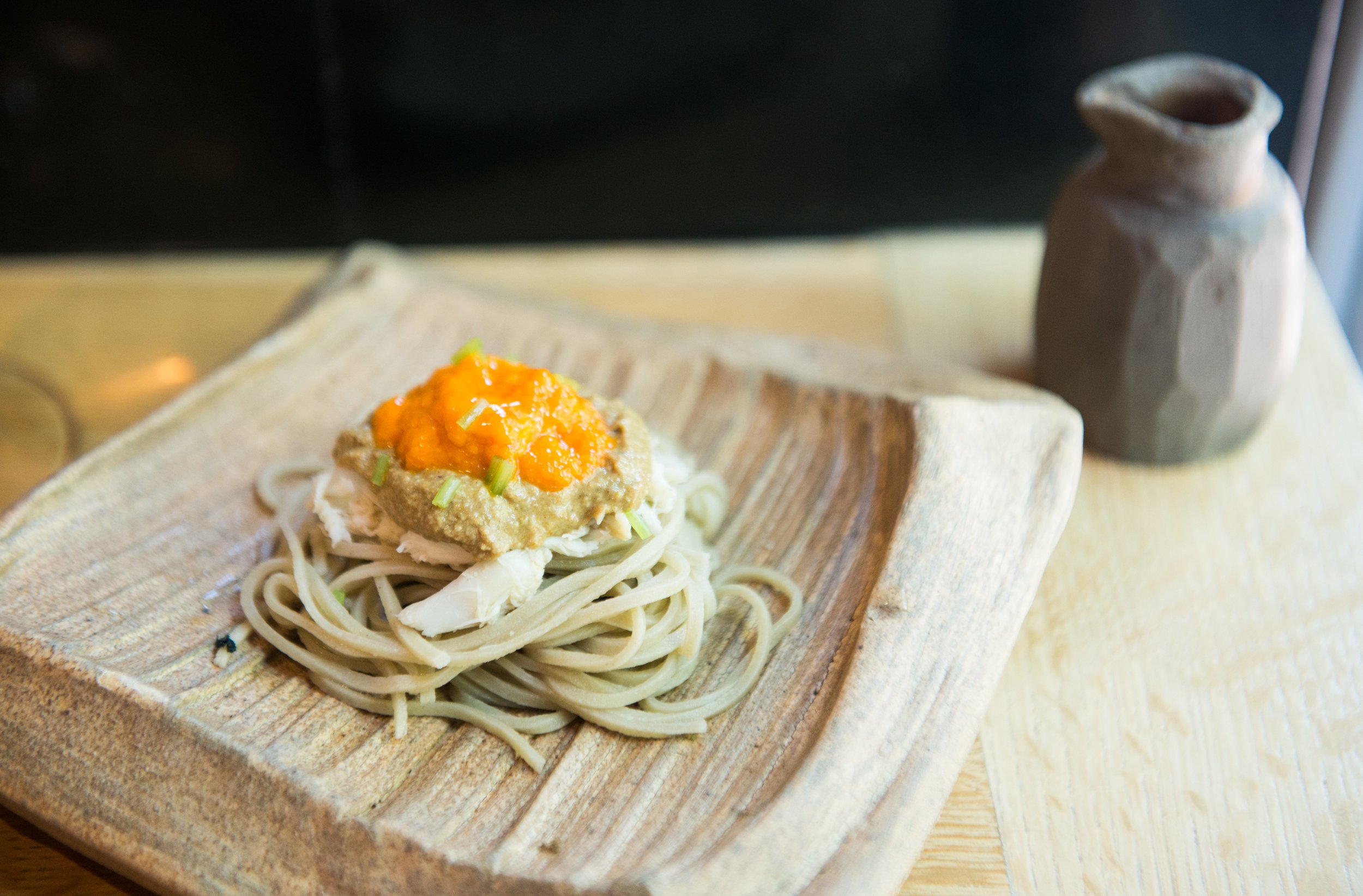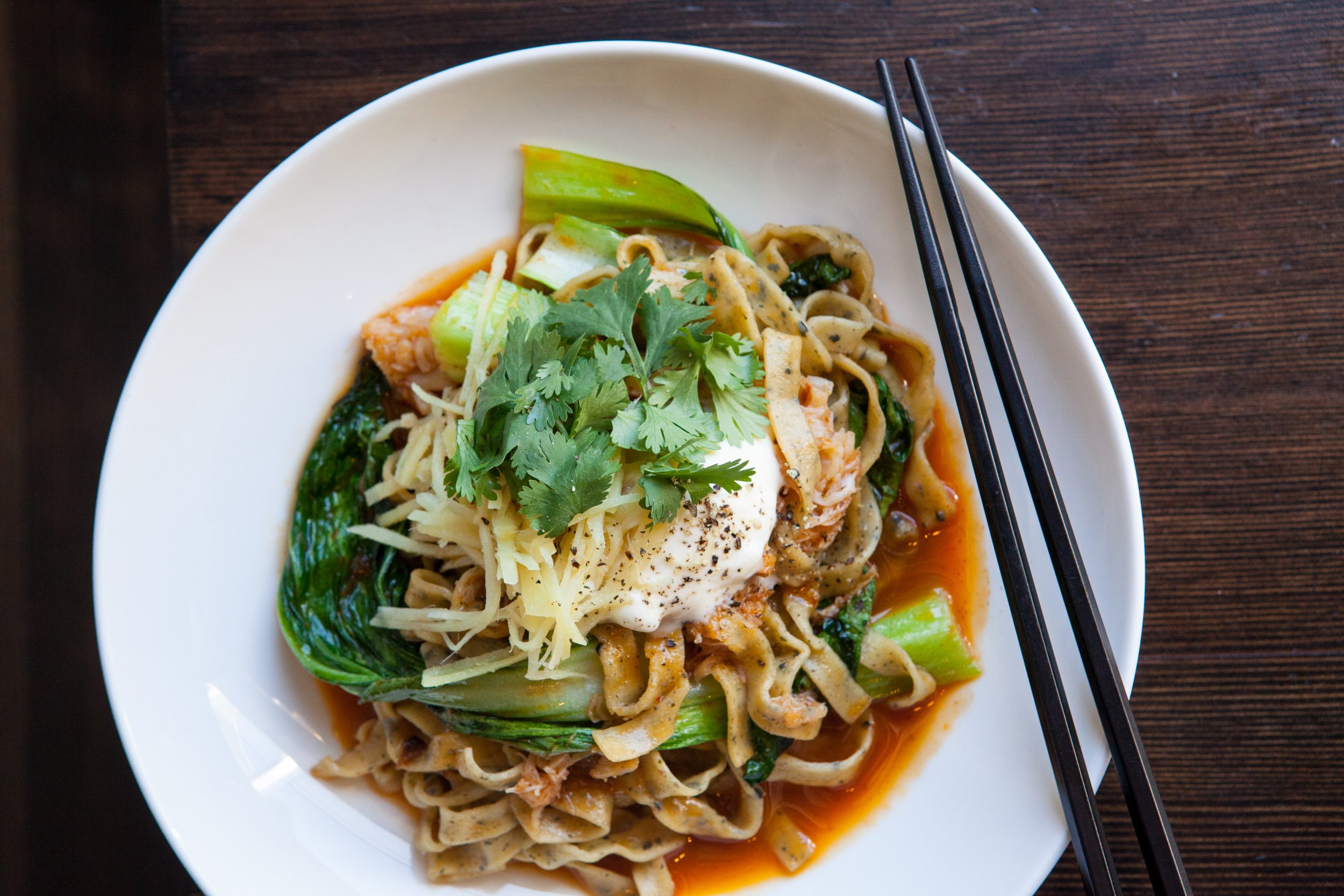Respect the Soba
Feature Dek
Clunk. Clunk. Clunk. It was that muffled, repetitive sound that kept Masaya Kitayama’s wife up at night. For such a formless reverberation, the source was peculiarly specific. In this case, clunk is the sound that the pursuit of perfection makes. Clunk is the vibration of dedication to craft.
House-Made Soba Noodles, Steamed Blue Crab, Blue Crab Mustard, Salted And Fermented Blue Crab Eggs | Photos: Alexa Bendek
Late into the night, Kitayama was transfixed by the glow of YouTube, where he would watch video after video of soba masters making noodles; kneading (clunk) and cutting slim, pristine, geometrically sound lengths of dough (clunk clunk clunk); and keeping his wife from a peaceful slumber. Today, the Kitayama household has returned to domestic tranquility, but for Kitayama, the quest for the perfect soba noodle never really ends.
“I was crying every night and watching these videos. I wanted to focus on the soba because it’s hand made, just buckwheat and water. But the technique is super difficult—not many can do it. The simpler the technique, the more difficult to master,” says Kitayama, chef of D.C.’s Sushi Taro.
It took two years for him just to get the dough where he wanted it. He tried different buckwheats and waters, and it always came out wrong. The noodles were far too short at a minuscule three inches. When he finally landed on the right buckwheat flour and water, it would be another three years before his boss, Rising Stars alum Chef Nobu Yamazaki, would put his soba on the menu.
Kitayama imports fresh buckwheat flour from Japan via Samuels & Son, which delivers it weekly. The flour is ground from refined buckwheat grains (never whole grains) much like the highly milled grains of rice that are used to make premium sake or Daiginjo. For water, he uses Deer Park—the main requirement being that the water is soft (the minerality of human tears just doesn’t cut it).
The sacred keys to soba noodle fulfillment are not mysterious or revolutionary. According to Kitayama, the two most important factors to consider (besides flour and water) are temperature and timing. Both ingredients should be at room temperature before combining, and from the time flour meets water, the soba master (or novice) must complete cutting the noodles within 20 minutes. Otherwise, the silken, supple texture will be lost, and the noodles may break apart into frustratingly short segments.
The kneading is done in three parts: a traditional knead; a flattening and rounding knead, forming the dough into a large dumpling shape and then into a disc; and rolling out and folding the dough in a similar fashion to lamination. Kitayama has posted his own series of videos on YouTube that are an exceptional visual aid. So, if you have some free time, say a decade, then start practicing.
Soba Equipment Essentials
A round sifter, much like a tamis
Three mahogany and cherry wood batons (rolling pins or noshibu), for flattening, rolling, and wrapping the dough around, respectively
A large bowl, about 2 feet wide and relatively shallow
Soba noodle cutter with wood handle
Wooden cutting board and a separate, smaller L-shaped board with straight edges for guiding hands and dough to perfectly linear noodle




